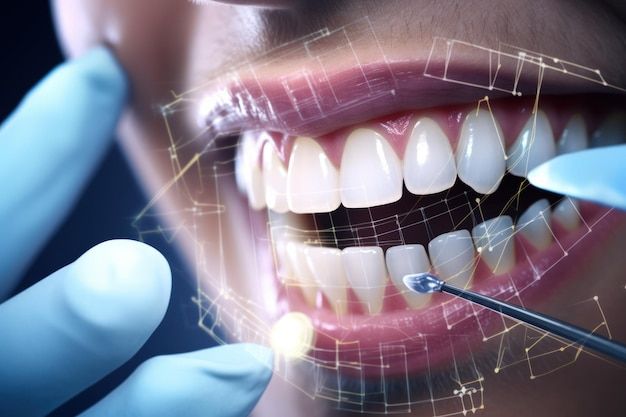Artificial Intelligence in Oral Diagnostics and Prevention: A New Era in Dentistry
DENTIST
7/22/20242 min read


Artificial Intelligence (AI) is revolutionizing healthcare, and dentistry is no exception. From diagnostic support to preventive care, AI technologies are enhancing the precision, efficiency, and accessibility of oral healthcare. In particular, AI-driven tools are playing a transformative role in early diagnosis and prevention of oral diseases, including dental caries, periodontal disease, and even oral cancer.
Enhanced Diagnostic Accuracy
One of the most significant contributions of AI in oral diagnostics is the use of machine learning algorithms to interpret radiographic images. AI systems trained on thousands of annotated dental radiographs can detect early signs of caries, bone loss, or periapical lesions with accuracy comparable to, and sometimes exceeding, that of experienced clinicians. These tools assist dentists in identifying conditions that may be subtle or easily overlooked during routine examinations.
In oral cancer detection, AI is being used to analyze clinical images and histopathological slides, improving the early identification of precancerous and malignant lesions. Deep learning models can differentiate between benign and suspicious lesions with increasing reliability, potentially enabling earlier interventions and improving patient outcomes.
Predictive Analytics and Risk Assessment
AI also supports prevention through predictive analytics. By integrating data from electronic health records, genetics, behavior, and lifestyle factors, AI models can assess a patient’s risk for various oral diseases. For instance, AI can predict the likelihood of periodontal disease progression based on plaque indices, smoking history, and previous clinical measurements, allowing for personalized prevention strategies.
Mobile apps powered by AI are now capable of monitoring oral hygiene habits using smartphone cameras. These apps guide users in brushing techniques and detect plaque in real time, enhancing patient compliance with oral hygiene practices.
Streamlined Workflow and Access to Care
AI simplifies administrative tasks, enabling clinicians to focus more on patient care. Automated charting, appointment scheduling, and treatment planning powered by AI reduce human error and increase practice efficiency. Additionally, AI-driven teledentistry platforms offer preliminary diagnostic support and patient triage, making oral healthcare more accessible, especially in underserved areas.
Conclusion
AI is reshaping the landscape of oral diagnostics and prevention, offering tools that improve accuracy, efficiency, and personalization of care. As these technologies continue to evolve, they hold great promise for reducing the burden of oral disease through earlier detection, targeted prevention, and expanded access to care. The integration of AI into everyday dental practice marks a critical step toward smarter, more proactive oral health management.
